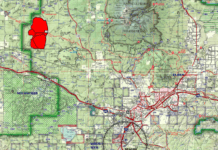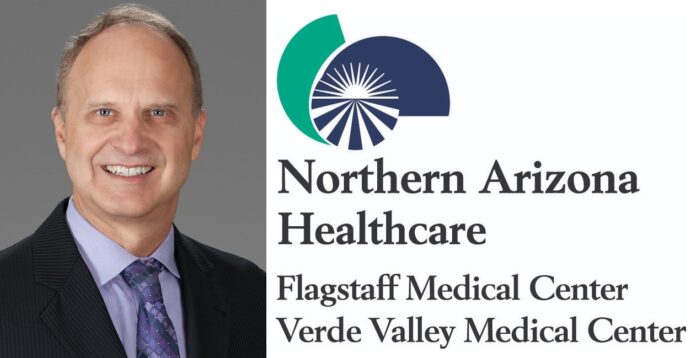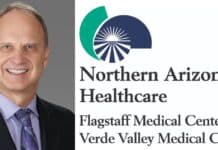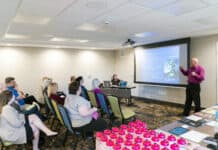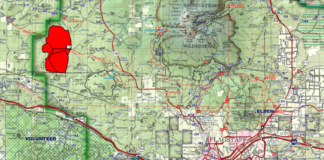Northern Arizona Healthcare CEO David Cheney started in the role on June 12. Cheney answered questions in an in-depth interview in December.
Verde Valley Health Care Series
This is the first story in a series from an in-depth interview with new Northern Arizona Healthcare CEO David Cheney.
■ NAH lost its status as a nationally-accredited breast center from the National Association Program for Breast Centers on Dec. 1, reportedly for “four to eight deficiencies or non-compliance in a critical standard.”
Cheney: “The accreditation was important to us because the criteria to be accredited is a hard bar and we’re really proud to put all of the criteria together to do that. There’s only three accredited sites in the state of Arizona: One in Goodyear, one in Tucson and ours in Sedona, and now there’s only two. So we were disappointed at the outcome, but it had nothing to do with clinical quality. The findings [that] prevented us from getting accredited were all administrative pieces. The same kind of care that was happening two months ago it happening today. So people should not feel at risk by going, because the findings [don’t] have anything to do with care or quality, it was all just administrative.
“We know what they are. We’re already fixing them and we hope to have that accreditation back within 12 months.”
■ Are there any plans to close the Sedona Emergency Department?
Cheney: “There are zero plans to close the ED in Sedona. We’re going to build services in Sedona around oncology, but there is no plan to close that ED.”
■ What steps are you taking to improve care?
Cheney: “People think that we’re waiting for my strategic plan to come out — I plan to have that come out here in the first quarter of next year [2024] — to start acting and I don’t need the strategic plan to do that. So what’s obvious here is we have a shortage of primary care in Sedona and Verde Valley, we have a huge shortage of specialty care in Sedona and Verde Valley and we’re going to fix that.
“So how are we going to fix it? Lots of different ways. No. 1, we hired an executive recruiter that is experienced in hiring for rural issues out of the state of Washington. She’s a superstar; she’s really good; she’s made more changes and more progress in the last three months than we’ve seen in the last year. So I’m really excited to have her on board. I hired her to be at least 90% of her work in Sedona and Verde Valley. Even though she’s going to be a ‘system person,’ she’s focused here. That’s underway. We’re doing that right now.
“We have to rebuild some of the programs that were taken away from the community. So, one, confirmation that the ED is not going anywhere. Two, apparently we had interventional cardiology down at Verde Valley. I don’t know what happened, but it went away. We’re bringing it back. So we’ve two candidates, hiring at least one, but we want to get two of them here immediately and build a cardiology program — not just for those two, but we really want general cardiologists to build around the community. So that was something that, for some reason before I got here, was taken away.
“We’re going to be building the cardiac program. That’s what I’ve heard loud and clear from the fire and EMS people that I know — that was their No. 1 thing.
“We need more urology. We need more GI and recruiting for those as well. It doesn’t happen overnight. You have to find the candidate, you have to sell the candidate. You have to get him to sign. It takes about three months to go through credentials. All in all, it can be six to eight months before they’re actually here — and they have to give up whatever practice [when] they are going somewhere.
“Those are my immediate things. The strategic plan will help us understand where we are. If we need more clinic spaces. Do we have enough clinic space to support these providers that we’re going to be bringing in? Where should they be located? There is nothing in the strategic plan that takes anything away. It should be ready in the first quarter [of 2024].”
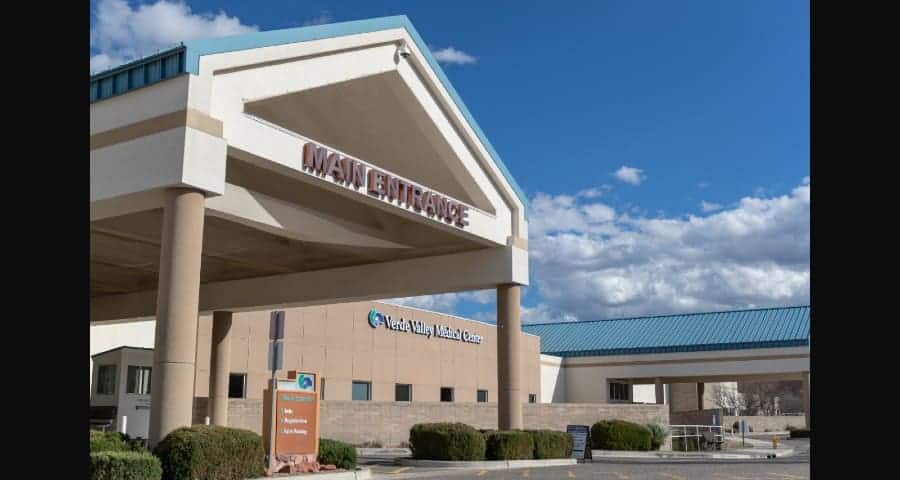
■ What is the current staffing level?
Cheney: “During COVID, I’m told that we were almost 56%, 57% travelers, which was bad, when more than half of your staff is traveling. In northern California it was about 10 points higher than that. So that’s not good.
“A year ago, in the summer of 2022, that number came down to in the mid-30s. Right now, for the whole system, we’re down to about 5%, so we’re making good progress. We’re not where I want it to be. We’re still going to continue attracting talent, keeping the talent that we have, because I’d like to get that number down.
“We want more people to actually be attracted to this area, stay in this area. That’s part of our strategic plan — reduce the number of travelers, reduce the number of locums and replace them with full-time people.”
■ In October 2022, NAH’s provider turnover was about 18% per year, lower than the national average of 24% to 28%. What is the current turnover rate?
Cheney: “It’s less than the national average. Among nurses I believe it to be about 14% or 15%.”
NAH later provided a provider turnover rate of 17.09% as of the month of November, which is a 12-month rolling statistic. The national rate is 22.7%, according to the 2023 NSI National Health Care Retention & RN Staffing Report.
■ The narrative out in the public is that it’s 50% or higher.
Cheney: “What they’re doing is they’re pulling data from when life was very different, when the number of travelers was 50-plus percent, when turnover [was] upwards of 25% during COVID. Everybody had that, I had that in northern California. They’re talking about two to three years ago, not today. It’s just not true.”
■ With recruiting doctors, are you also trying to recruit physicians assistants, nurse practitioners, technicians, etc.?
Cheney: “Yes, and we’re having some success with that. What we need to do better [is] to educate the community that the care of a good level is excellent. Sometimes, people have it in their mind that ‘if it’s not an MD or a DO, I’m not going to go,’ but the truth is the mid-levels provide the same care. So we are recruiting the mid-levels, aggressively.”
■ How are you dealing with the housing crisis in terms of getting staff?
Cheney: “That’s really difficult. I was talking with the CEO of Yavapai Regional Medical Center, he has the same issue. We had the same issue in northern California. The price of housing is outrageous anywhere and it’s really difficult. So the average cost of living, the average cost of a house in the Flagstaff area, came down $600,000. I don’t have any nurses or technicians or support staff making $600,000.
“I’m working with the other local businesses in the community to try to figure out, how do we bring affordable housing to Verde Valley, Sedona and Flagstaff. Government’s not going to solve this problem. Business leaders are going to solve this problem. I don’t have an answer on how to fix it yet because it’s gonna take all of us trying to figure it out. I don’t know if anybody can straighten it out.”
■ The Sedona campus has about 40 acres. Do you have any plans for what to do with that part of those parcels?
Cheney: “We don’t have any specific plans for that. But we are on plans to build whatever the community needs are, in terms of care. We just don’t know exactly what that looks like. It’s not certainly to build a hospital, but to build on preventative care and that can take a lot of different forms. But the short answer is no direct plans.”
■ Would you consider building staff housing for medical personnel?
Cheney: “We thought about that; we’re not totally sure how to do it. I brought this up to my team and as we talked through it, it sounds like such a good idea. Say we build staff housing and a little family moves in there, and a week later, they get a job somewhere else. Do I kick them out? What do I do? It becomes complicated.
“We are talking about several steps. What can we do with a developer to help, whether it’s sort of land lease or something to provide the land part of it. So we are exploring that. But we didn’t want to get into the developer business. That’s a really key point because that’s what we heard in the community from Flagstaff. We understand that.”



